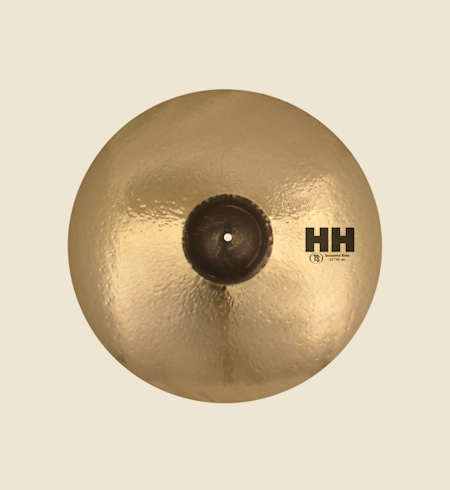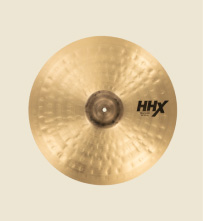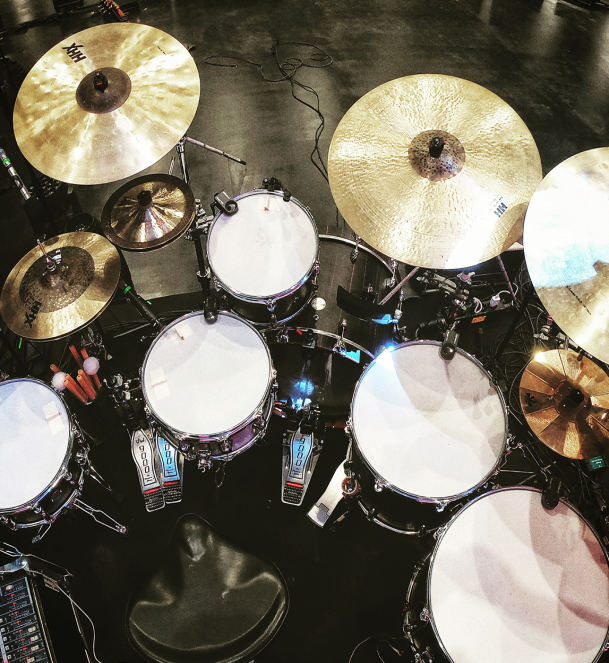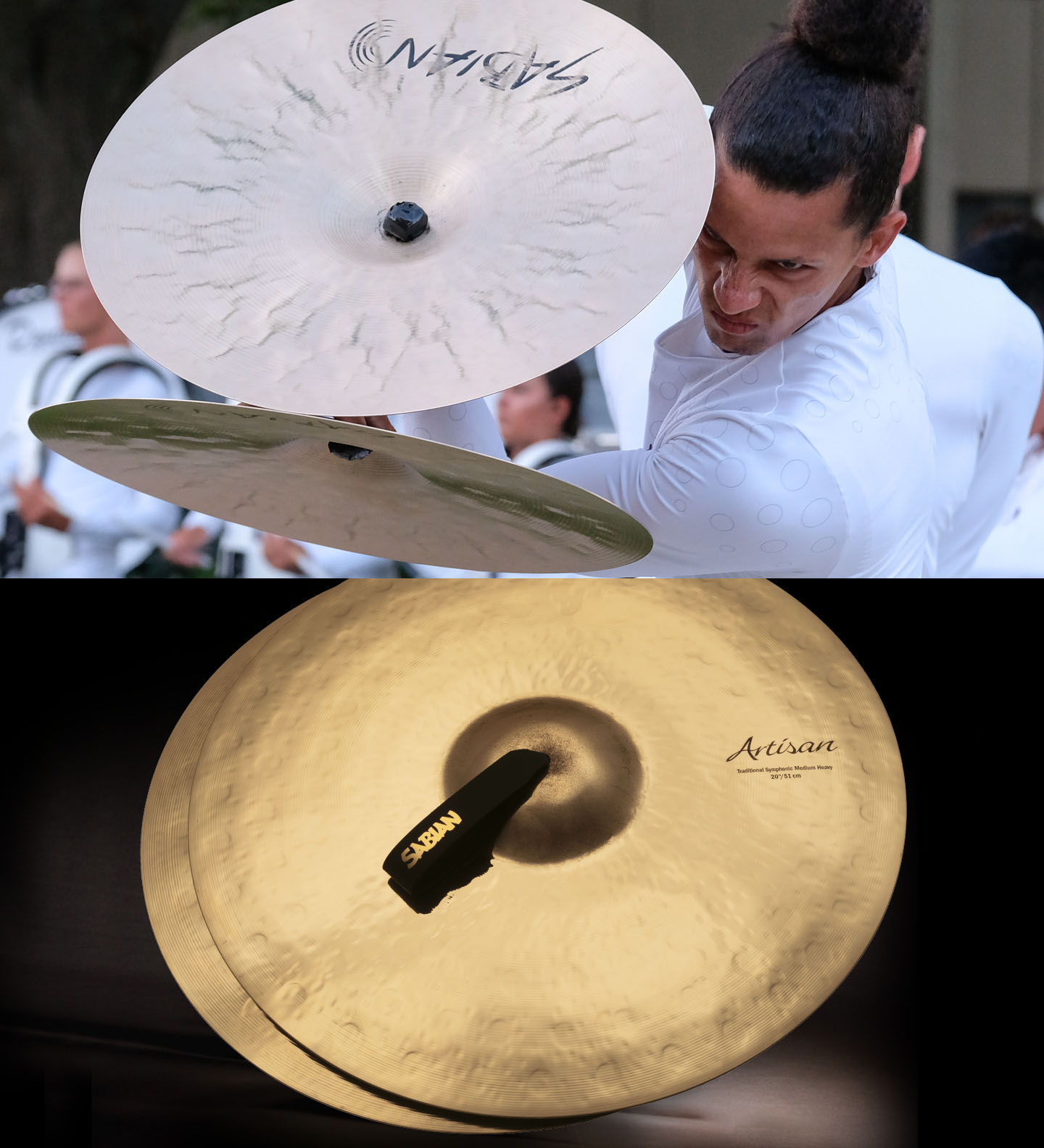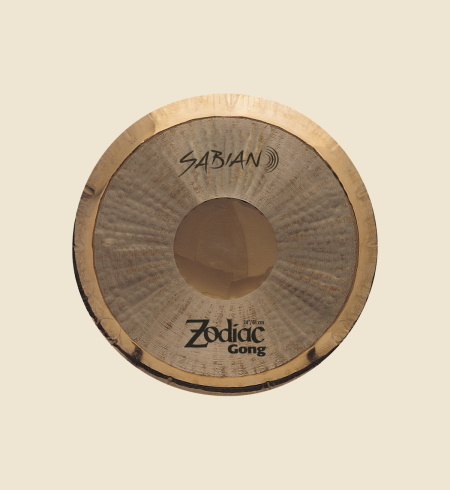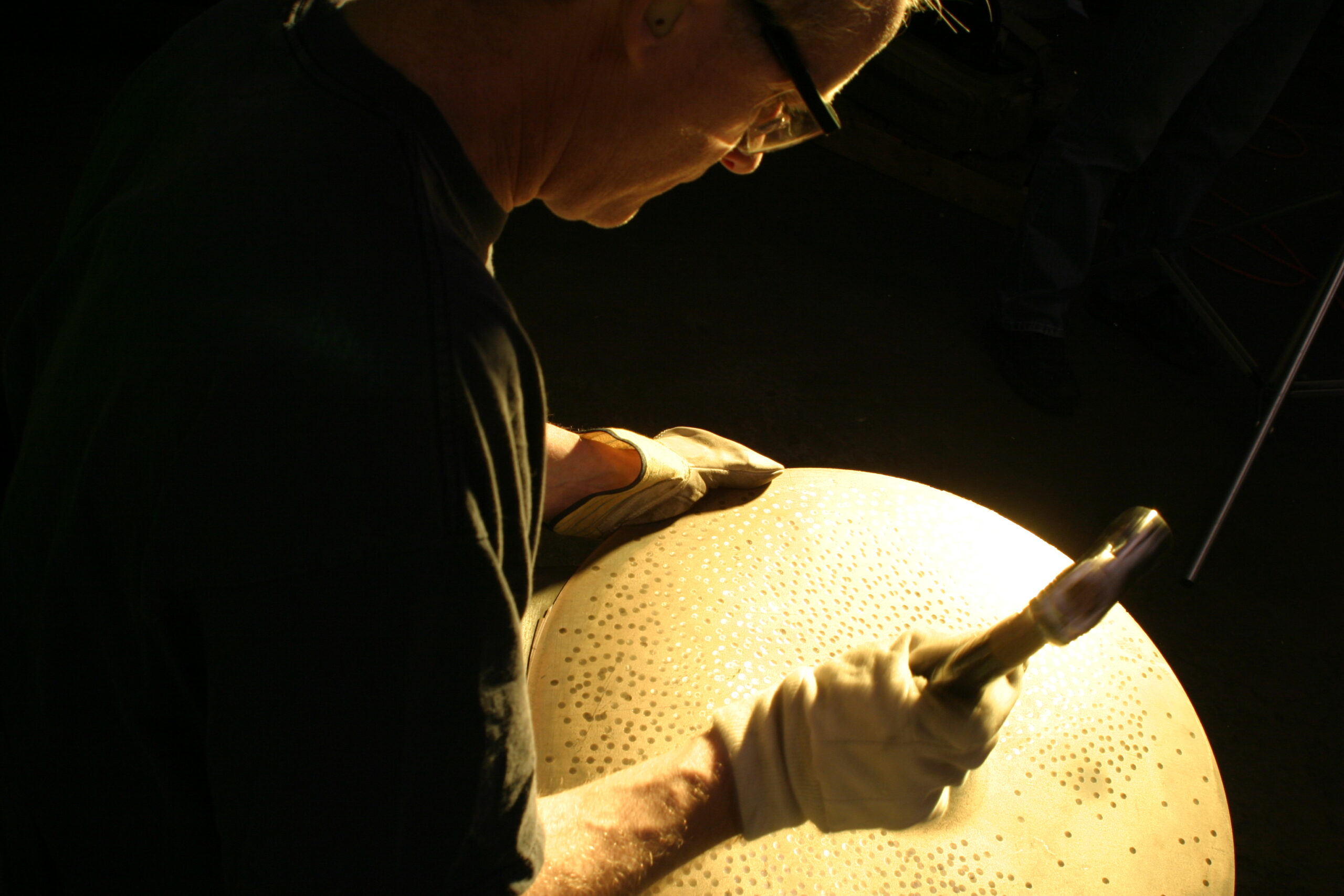The process of creating a cymbal is a journey of innovation and creativity that starts with a thick casting and ends with a one-of-a-kind musical instrument. After castings become blanks that are further tempered, drilled and cut down, those blanks destined for hand hammering receive a preliminary bump or flattening process as a starting point to craft the final shape. From there, the blanks are carted over to SABIAN artisans, who hammer them individually by hand. It’s a skilled craft that’s over four hundred years old, and the hand hammerers at SABIAN’s Meductic factory were trained by traditional cymbal makers all the way from Istanbul.
The hammering process compresses the bronze, which adds to the cymbal’s overall complexity. The number and the intensity of the hits, along with the size of the hammer peen, determine the final result, as vibrations resonate throughout the dimpling at varying speeds.
“There’s a lot of manual work to achieve that shape on a hand hammered cymbal, it’s kind of like building a bridge or a structure,” said Mark Love, SABIAN’s Director of Research and Development. “You have to build tension into it. When you hammer it, you affect how the sonic waves travel through the cymbal, depending on how many hammer marks, the size of them, the depth of them, whether it’s hammered on the underneath side or the top side. There’s many different combinations of hammerings and the styles of peens, so there’s a lot of crossover to get different sounds.”
The hand hammerer’s goal is to strike the blanks in such a way that achieves a desired shape and tone, depending on which model they’re crafting. Each strike of the hammer influences these factors, so each artisan uses their own particular style to create unique dimpling depths and hammering amounts. This ensures that every cymbal has its own sound as a one-of-a-kind instrument. To gauge the profile of the intended cymbal, a metal template is used, and the blank is hammered until it fits perfectly. Only then does a blank earn the title of cymbal and its specific model.
“You could automate a lot of what we do, but we feel we’d lose a lot of our craftsmanship and ability,” Love said. “We typically look to automate processes that don’t take away from the craftsmanship of making a musical instrument.”
SABIAN’s innovative designs guide the blank’s journey down various paths, based on their different series and models. The artisans use their own creativity to craft cymbals that fit perfectly with modern music styles, while still paying homage to traditional craftsmanship. In this process, every cymbal created by SABIAN is not only a musical instrument but also a work of art.

